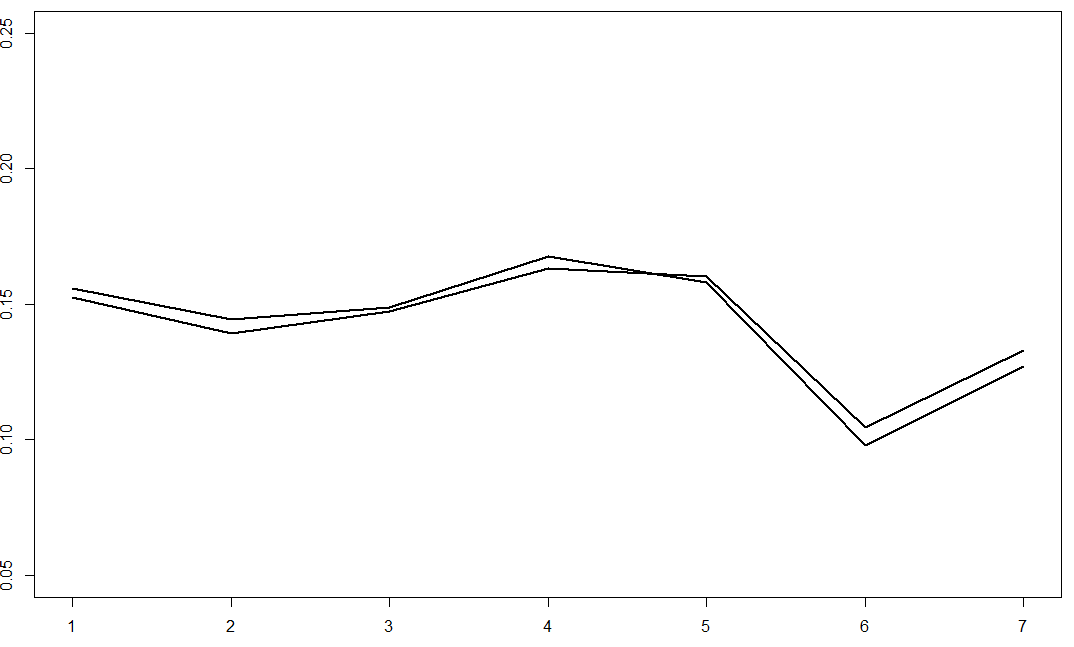I'm working with categorical data and want to run a chi squared test. I want to test the frequencies:
A = list(12455, 11554, 11908, 13416, 12647, 7828, 10172)
against the distribution of frequencies in a larger set:
B = list(181395, 165347, 175331, 193760, 190370, 124226, 157822)
A is a is sub category of the entire population B and I want to see if A differs from B. Plotting the percentages and looking at the graph I thought that A would not differ from B. (A starts on top)
Calculating the expected frequencies I get
expected = list(12209.518, 11129.343, 11801.356, 13041.794, 12813.616,
8361.529, 10622.843)
observed = list(12455, 11554, 11908, 13416, 12647, 7828, 10172)
Now if I run a chi squared test I will have 6 degrees of freedom because I have 7 categories. This means that if my test statistic is larger than 12.59 then I would have reject the null hypothesis that A follows the same distribution to B.
Since my frequencies are large my test statistic becomes very large. However if I had the same distribution of B but the frequencies in A were an order (or 2) of magnitude smaller each difference would not add as much to the test statistic and I would get a different answer. For example using the above observed and expected values the individual terms of the test statistic are
\begin{align} \frac{({\rm obs}-{\rm exp})^2}{{\rm exp}} &= 4.9356051 + 16.2034261 + 0.9636932 + 10.7370279 + \\ &\quad\; 2.1665275 + 34.0432283 + 19.1341639 \\[10pt] &= 88.18367 \end{align}
If A would have frequencies in the 1000's instead of 10 000's. we would get
obs' = list(1246, 1155, 1191, 1342, 1265, 783, 1017)
exp' = list(1221.1045, 1113.0735, 1180.2832, 1304.3425, 1281.5219,
836.2575, 1062.4171)
And a resulting test statistic of 8.817601, which would mean I do not reject the null since 8.817601 < 12.59.
With all that said it seems that if you have large frequencies the slightest of change in percentages will will cause the chi squared test to reject the null even though the two distributions look very similar.
Is chi squared test applicable when frequencies are very large? is my understanding of comparing A and B using chi squared correct? Is A actually significantly different from B?

